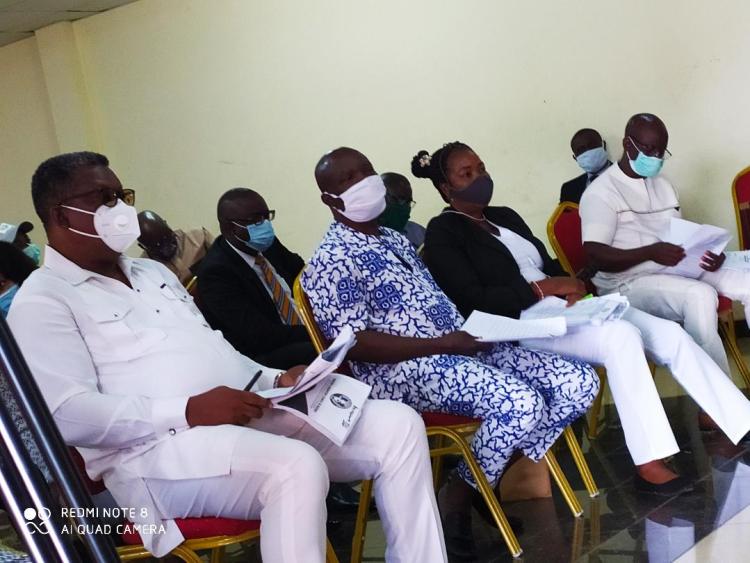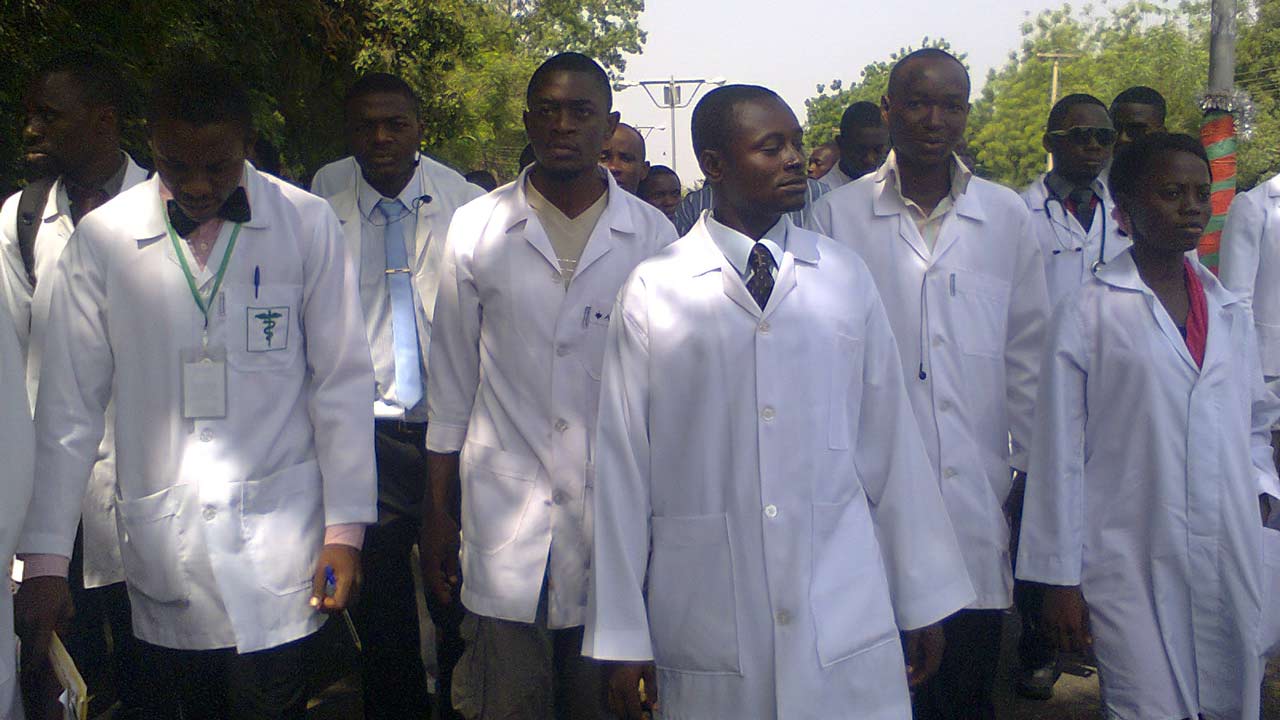In the first population-based study to examine the association between onion and garlic consumption and breast cancer in Puerto Rico, researchers found that women who ate sofrito (a mixture of garlic and onion) more than once per day had a 67 per cent decreased breast cancer risk.
Onions and garlic are key ingredients in sofrito, a condiment that’s a staple of Puerto Rican cuisine. They may also be recipes for reducing the risk of breast cancer. That is according to the findings of a study led by University of Buffalo and University of Puerto Rico researchers. It is the first population-based study to examine the association between onion and garlic consumption and breast cancer in Puerto Rico.
The study titled “Onion and Garlic Intake and Breast Cancer, a Case-Control Study in Puerto Rico” was published in the journal Nutrition and Cancer.

“We found that among Puerto Rican women, the combined intake of onion and garlic, as well as sofrito, was associated with a reduced risk of breast cancer,” said Gauri Desai, the study’s lead author, who is an epidemiology PhD student in UB’s School of Public Health and Health Professions.
In fact, those who consumed sofrito more than once per day had a 67 per cent decrease in risk compared to women who never ate it. The idea for the study stemmed from previous scientific evidence showing that eating onions and garlic might have a protective effect against cancer.
“Studying Puerto Rican women who consume a lot of onions and garlic as sofrito was unique,” Desai said, adding that it was total intake of onions and garlic, not sofrito alone, that was associated with breast cancer risk.
Puerto Rico was a perfect place to study, because women there consume larger amounts of onions and garlic than in Europe and the United States (U.S.), due largely to the popularity of sofrito, Desai noted. Onions and garlic also are eaten regularly in “guisos” (stews), as well as in bean- and rice-based dishes in Puerto Rican cuisine.
In addition, “Puerto Rico has lower breast cancer rates compared to the mainland U.S., which makes it an important population to study,” Desai said.
“There is very little research on breast cancer in Puerto Rico. This study was a collaboration between my colleagues here at UB and at the University of Puerto Rico to help us understand why rates there are lower than in the rest of the U.S., and why rates there are continuing to increase while they are decreasing in the rest of the United States,” said study co-author Jo Freudenheim, PhD, chair of epidemiology and environmental health at UB.
So, why the focus on these two ingredients? “Onions and garlic are rich in flavonols and organosulphur compounds,” Desai said.
In particular, garlic contains compounds such as S-allylcysteine, diallyl sulphide and diallyl disulphide, while onions contain alk(en)yl cysteine sulphoxides. “These compounds show anti-carcinogenic properties in humans, as well as in experimental animal studies,” said Lina Mu, the study’s senior author, who is an associate professor of epidemiology and environmental health at UB.
Study participants were enrolled in the Atabey Study of Breast Cancer, a case-control study named after the Puerto Rican goddess of fertility. The study was conducted between 2008 and 2014 and included 314 women with breast cancer and 346 control subjects.
Meanwhile, versions of an antibiotic drug called DON first isolated from soil bacteria more than 60 years ago have shown promising signs of extending survival in mice models of especially lethal pediatric brain tumors marked by the high expression of a cancer-causing gene known as the MYC oncogene, according to results of two studies from researchers at the Johns Hopkins Kimmel Cancer Center.
The MYC-expressing subgroups of atypical teratoid/rhabdoid tumours and medulloblastoma, while rare, are especially aggressive, with a minority of patients surviving their disease, even with the use of intensive chemotherapy and radiation.
The poor outcomes for patients have brought urgency; scientists say, to the search for new ways to treat the cancers in conjunction with current therapies such as surgery, chemotherapy and radiation therapy. The new findings, they say, suggest that the altered metabolism of an amino acid in these tumors needed to make proteins and energy for the cancer cell could be a productive target for clinicians.
Tumours with high MYC expression have increased metabolism of the key amino acid glutamine, the scientists say. By inhibiting glutamine metabolism with DON or a so-called “prodrug” version of it that converts to DON in the brain, the researchers were able to extend survival times by more than 30% in mice transplanted with these human cancer cells. DON was first isolated in 1956 from bacteria in soil found in Peru, and its ability to block glutamine has long made it a candidate for cancer therapy, but it was never systematically tested against high-MYC-expressing cancers.
For the current experiments, the Johns Hopkins scientists gave a weekly DON injection to mice bearing high-MYC-expressing AT/RT cell lines and extended the animals’ median survival times from 21 to 36 days, and to 45 days when DON was combined with the chemotherapy drug carboplatin. The scientists performed metabolic experiments that showed that DON blocked glutamine from being made into glutathione, one of major detoxifying substances that cancer cells use to thwart carboplatin chemotherapy. DON depleted the cancer cells of glutathione, making carboplatin chemotherapy more effective.
In mice with MYC-expressing medulloblastoma who were treated twice weekly with JHU-083 by mouth, an experimental DON version designed to be better metabolized and less toxic in the brain and in development at Johns Hopkins Drug Discovery, median survival rose from 21 to 28 days in immune-deficient mice and 16 to 25 days in immune-competent mice.
Disrupting abnormal metabolism is targeting “an Achilles’ heel that would hurt the cancer cells but not hurt the normal cells in the brain or body,” said Eric Raabe, M.D., Ph.D., an associate professor of oncology at the Johns Hopkins University School of Medicine, who was a co-author on both papers and lead author of the paper on medulloblastoma published July 21 in Translational Oncology.
Meanwhile, there is no clear link between cancer incidence and locally produced food from an area with a history of glass manufacture with contaminated soil, according to a new study from, among others, Linköping University in Sweden. A high consumption of certain local foods seems to be linked to an increased risk of certain cancers, but this probably reflects that the exposure to contaminants was higher in the past.
An area of Småland County in Sweden, known as the “Kingdom of Crystal,” has been home to an extensive glass industry since the 18th century, but several glassworks have closed in recent years due to poor profitability. At the same time, it was discovered that metals, such as arsenic, cadmium and lead, heavily contaminated the soil around the glassworks. This was a heavy blow for tourism in the municipalities of Nybro, Emmaboda, Uppvidinge and Lessebo. The discovery also aroused anxiety in those living around the glassworks, which became unsure whether it is safe to eat vegetables and berries from the area.
Somewhat increased levels of the metals had previously been measured in root crops, vegetables, fungi and berries from this area. Food may also contain contaminants known as polyaromatic hydrocarbons (PAHs), formed by incomplete cooking. These substances have several negative effects on health, including an increased risk for cancer. The researchers observed in a previous study that some types of cancer were more common in the glassworks area than in other areas of Kalmar County and Sweden. They observed also, however, that cancer incidence fell between the 1970s and the 2010s. Since many similar contaminated areas are found both in Sweden and in other countries, the scientists behind the study wanted to investigate whether long-term consumption of locally produced food may have contributed to the incidence of cancer in the Kingdom of Crystal.
The study included 2,200 adults who had lived within two kilometres of a glassworks or a glass landfill site in the municipalities of Nybro or Emmaboda for at least five years during the period 1979-2004. The participants completed a questionnaire to estimate their long-term consumption (20-30 years) of locally produced food, and the researchers collected data from registries about the incidence of cancer.
The study was a case-controlled study, in which the researchers compared the group of people who had developed cancer with those who had not. They examined whether diet or other factors differed between the groups. Some participants supplied blood samples, in which the scientists measured levels of cadmium, lead and arsenic. Levels of a marker for PAHs were measured in urine samples.
Despite the high levels of arsenic, cadmium and lead that had previously been measured in the soil, it does not appear that the population is exposed to abnormally high levels of the contaminants now. The results showed, namely, that the levels of these metals and PAHs in the blood and urine of the study participants as a group were the same, or only slightly higher than, the levels in other groups in Sweden. The researchers believe that the lower exposure today can be explained by the emissions of these contaminants being generally higher in the past.
When analysing in more detail the diet of the participants, however, the researchers found a link between a high consumption of locally grown root crops and vegetables and higher levels of cadmium and PAHs. They also found a link between high consumptions of locally produced fish, lamb, chicken and game and higher levels of lead in the blood.
The study revealed also a link between an increased risk of certain types of cancer and long-term high consumption of locally produced meat and locally caught fish. Living in the Kingdom of Crystal during the first five years of life was also associated with a higher risk. However, a statistical correlation does not necessarily mean that consumption of these foods causes the increased risk of developing cancer.
“The correlations we found between high, long-term consumption of some locally produced foods and certain types of cancer probably reflect a higher exposure during the first half of the 20th century, when emissions from the glassworks were higher. If the consumption of locally produced food does contribute to the development of certain types of cancer, the contribution is probably much lower today than it was previously. It’s not dangerous to eat locally produced food occasionally, but it is, even so, important to rinse vegetables and to avoid growing food in any soil that contains glass residue,” says Ingela Helmfrid, doctoral student in the Department of Clinical and Experimental Medicine, and biologist at the Occupational and Environmental Medicine Centre, Region Östergötland.
The study also showed that previously known risk factors for cancer, such as tobacco use, obesity and a family history of cancer, are associated with an increased risk of cancer. “The risk of cancer for a particular individual in the region we have studied is low. Several factors influence the onset of cancer, and it takes a long time to develop the disease,” says Ingela Helmfrid.
The scientists plan to continue their research. They will investigate whether there is a link between exposure to the metals and other diseases, such as cardio-vascular disease, diabetes, kidney disease or osteoporosis.
Disrupting abnormal metabolism is targeting “an Achilles’ heel that would hurt the cancer cells but not hurt the normal cells in the brain or body,” said Eric Raabe, M.D., Ph.D., an associate professor of oncology at the Johns Hopkins University School of Medicine, who was a co-author on both papers and lead author of the paper on medulloblastoma published July 21 in Translational Oncology.
Meanwhile, there is no clear link between cancer incidence and locally produced food from an area with a history of glass manufacture with contaminated soil, according to a new study from, among others, Linköping University in Sweden. A high consumption of certain local foods seems to be linked to an increased risk of certain cancers, but this probably reflects that the exposure to contaminants was higher in the past.
An area of Småland County in Sweden, known as the “Kingdom of Crystal,” has been home to an extensive glass industry since the 18th century, but several glassworks have closed in recent years due to poor profitability. At the same time, it was discovered that metals, such as arsenic, cadmium and lead, heavily contaminated the soil around the glassworks. This was a heavy blow for tourism in the municipalities of Nybro, Emmaboda, Uppvidinge and Lessebo. The discovery also aroused anxiety in those living around the glassworks, which became unsure whether it is safe to eat vegetables and berries from the area.
Somewhat increased levels of the metals had previously been measured in root crops, vegetables, fungi and berries from this area. Food may also contain contaminants known as polyaromatic hydrocarbons (PAHs), formed by incomplete cooking. These substances have several negative effects on health, including an increased risk for cancer. The researchers observed in a previous study that some types of cancer were more common in the glassworks area than in other areas of Kalmar County and Sweden. They observed also, however, that cancer incidence fell between the 1970s and the 2010s. Since many similar contaminated areas are found both in Sweden and in other countries, the scientists behind the study wanted to investigate whether long-term consumption of locally produced food may have contributed to the incidence of cancer in the Kingdom of Crystal.
The study included 2,200 adults who had lived within two kilometres of a glassworks or a glass landfill site in the municipalities of Nybro or Emmaboda for at least five years during the period 1979-2004. The participants completed a questionnaire to estimate their long-term consumption (20-30 years) of locally produced food, and the researchers collected data from registries about the incidence of cancer.
The study was a case-controlled study, in which the researchers compared the group of people who had developed cancer with those who had not. They examined whether diet or other factors differed between the groups. Some participants supplied blood samples, in which the scientists measured levels of cadmium, lead and arsenic. Levels of a marker for PAHs were measured in urine samples.
Despite the high levels of arsenic, cadmium and lead that had previously been measured in the soil, it does not appear that the population is exposed to abnormally high levels of the contaminants now. The results showed, namely, that the levels of these metals and PAHs in the blood and urine of the study participants as a group were the same, or only slightly higher than, the levels in other groups in Sweden. The researchers believe that the lower exposure today can be explained by the emissions of these contaminants being generally higher in the past.
When analysing in more detail the diet of the participants, however, the researchers found a link between a high consumption of locally grown root crops and vegetables and higher levels of cadmium and PAHs. They also found a link between high consumptions of locally produced fish, lamb, chicken and game and higher levels of lead in the blood.
The study revealed also a link between an increased risk of certain types of cancer and long-term high consumption of locally produced meat and locally caught fish. Living in the Kingdom of Crystal during the first five years of life was also associated with a higher risk. However, a statistical correlation does not necessarily mean that consumption of these foods causes the increased risk of developing cancer.
“The correlations we found between high, long-term consumption of some locally produced foods and certain types of cancer probably reflect a higher exposure during the first half of the 20th century, when emissions from the glassworks were higher. If the consumption of locally produced food does contribute to the development of certain types of cancer, the contribution is probably much lower today than it was previously. It’s not dangerous to eat locally produced food occasionally, but it is, even so, important to rinse vegetables and to avoid growing food in any soil that contains glass residue,” says Ingela Helmfrid, doctoral student in the Department of Clinical and Experimental Medicine, and biologist at the Occupational and Environmental Medicine Centre, Region Östergötland.
The study also showed that previously known risk factors for cancer, such as tobacco use, obesity and a family history of cancer, are associated with an increased risk of cancer. “The risk of cancer for a particular individual in the region we have studied is low. Several factors influence the onset of cancer, and it takes a long time to develop the disease,” says Ingela Helmfrid.
The scientists plan to continue their research. They will investigate whether there is a link between exposure to the metals and other diseases, such as cardio-vascular disease, diabetes, kidney disease or osteoporosis.
ABUJA: Training Schedule for Basic Life Support BLS, Pediatric Advanced Life Support (PALS), Advanced Cardiovascular Life Support ACLS, First Aid, CPR, AED
PORTHARCOURT: Training Schedule for Basic Life Support BLS, Pediatric Advanced Life Support (PALS), Advanced Cardiovascular Life Support ACLS, First Aid, CPR, AED
LAGOS: Training Schedule for Basic Life Support BLS, Pediatric Advanced Life Support (PALS), Advanced Cardiovascular Life Support ACLS, First Aid, CPR, AED





